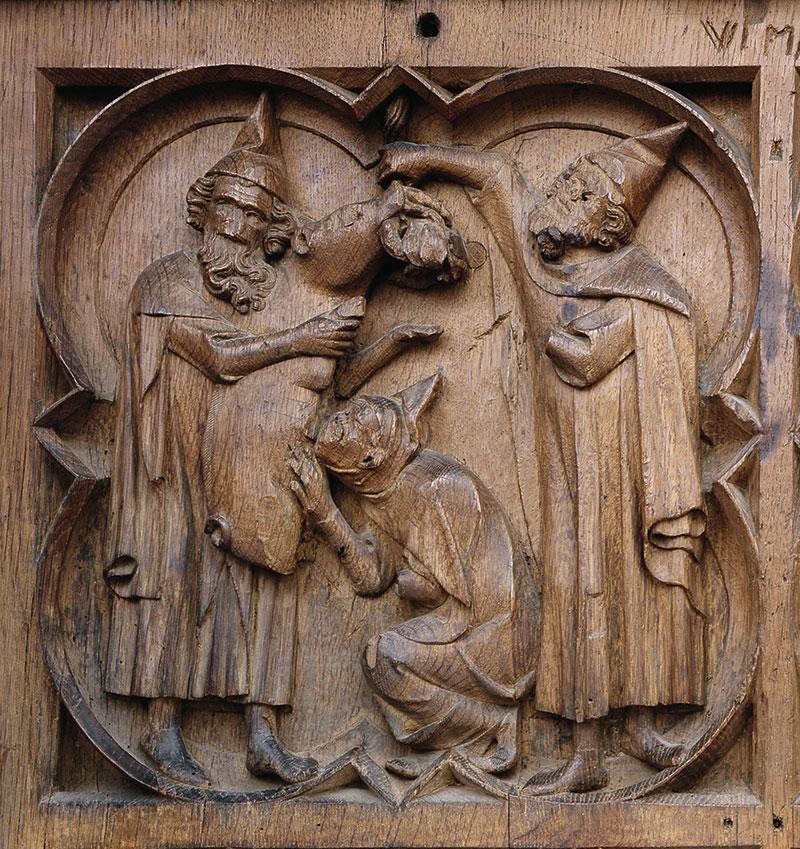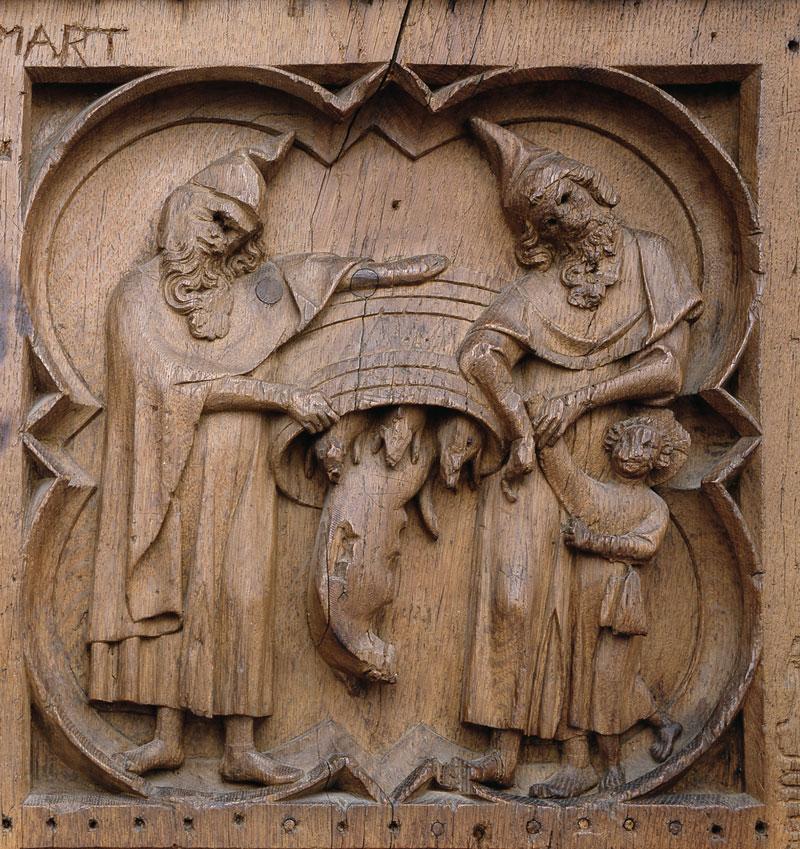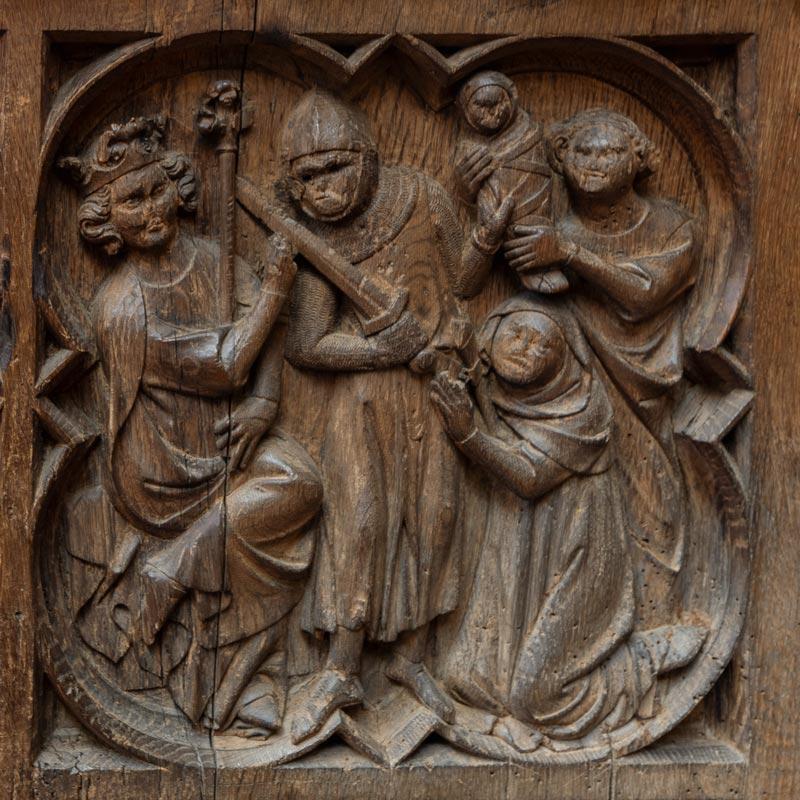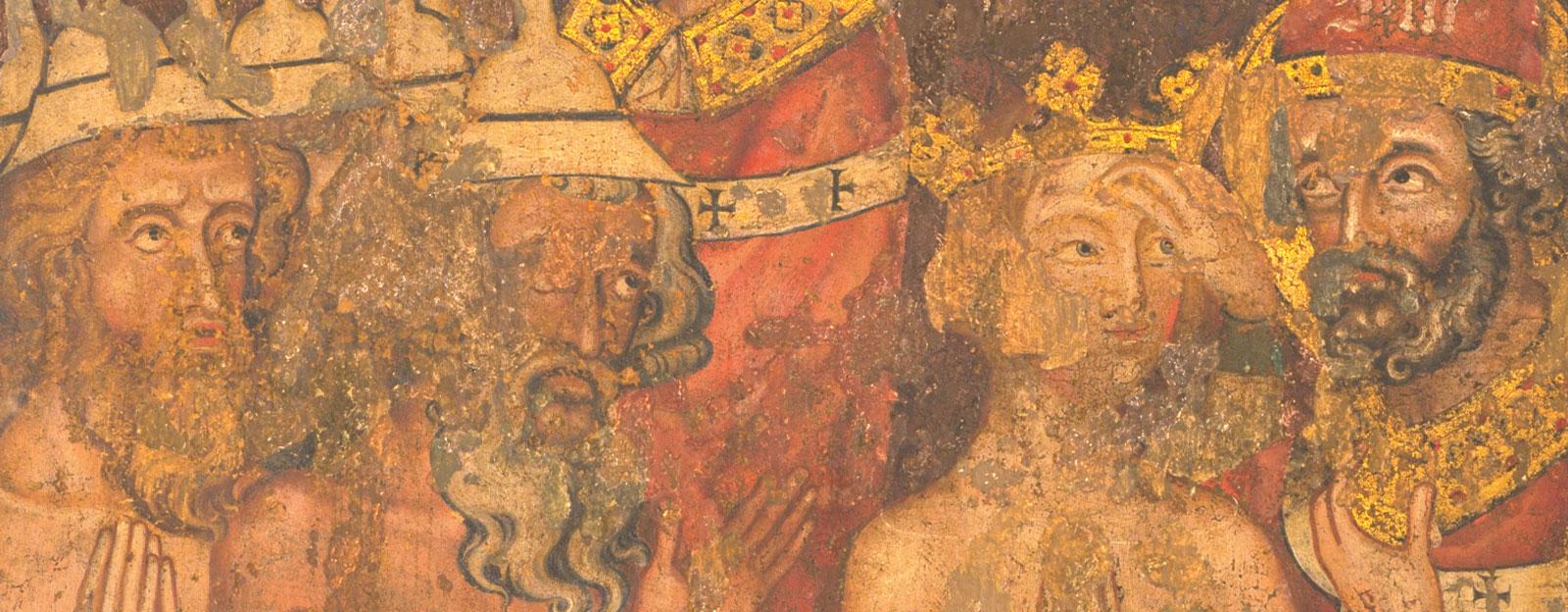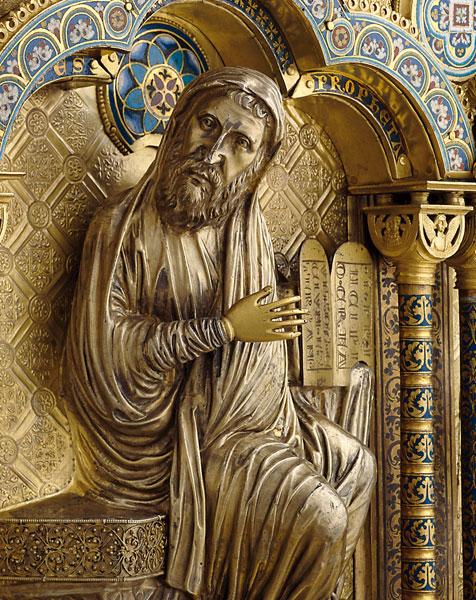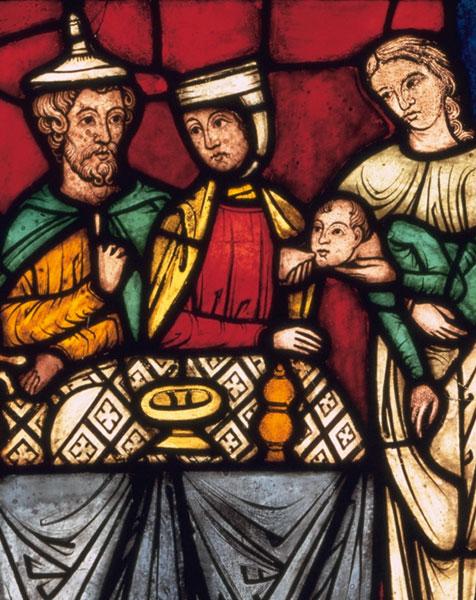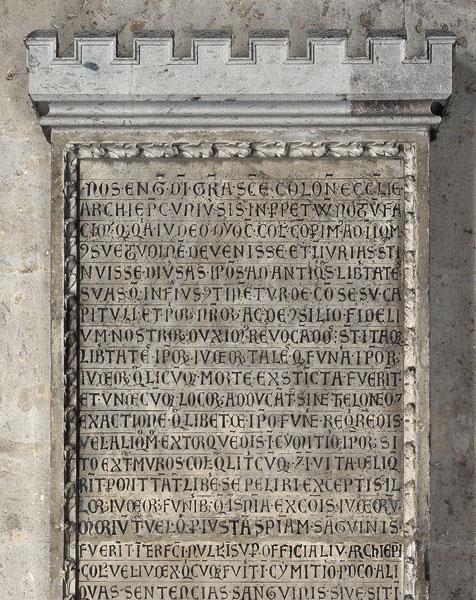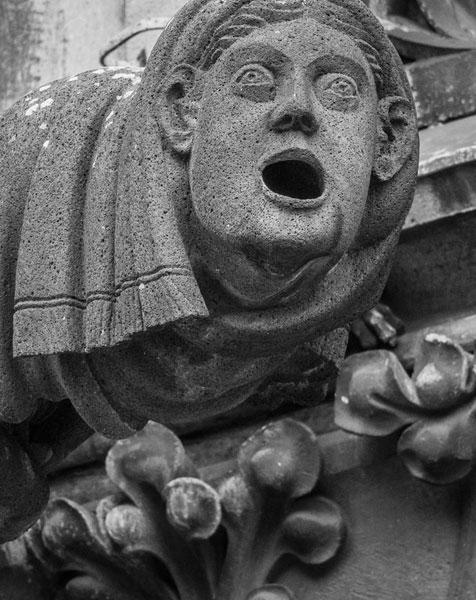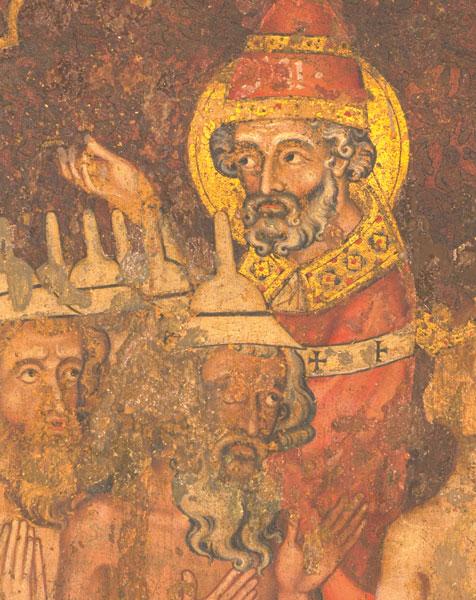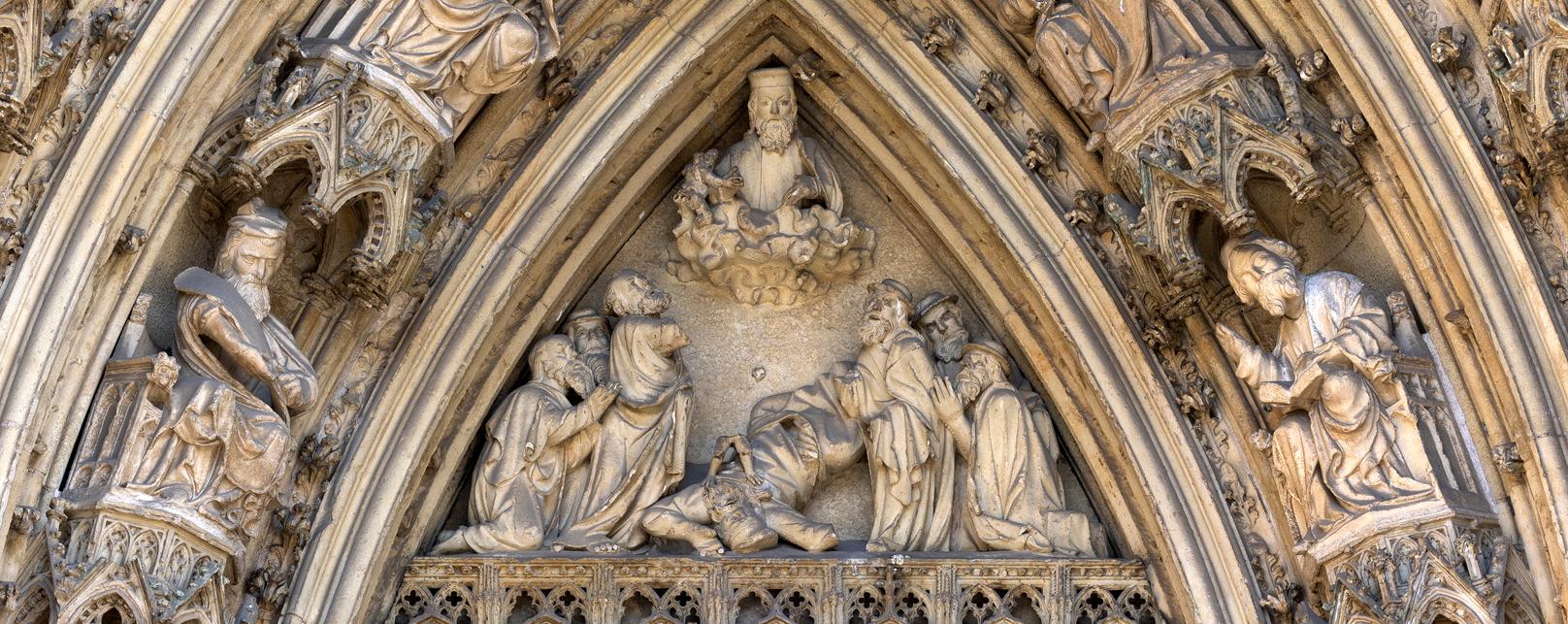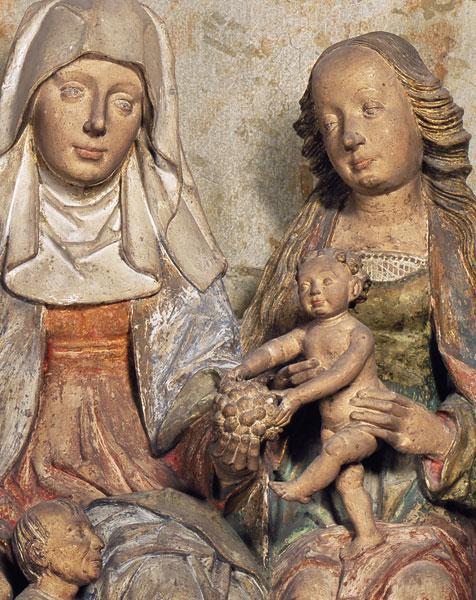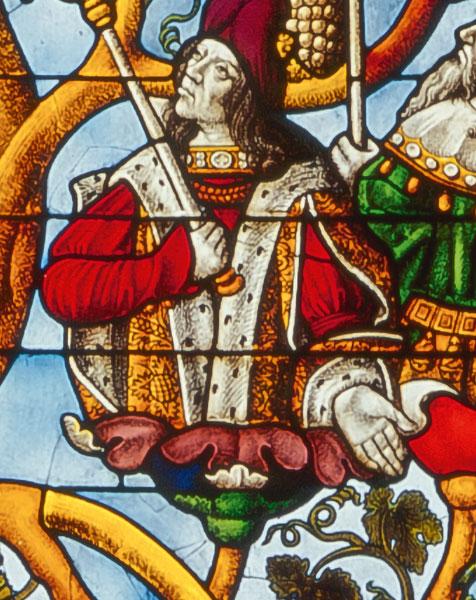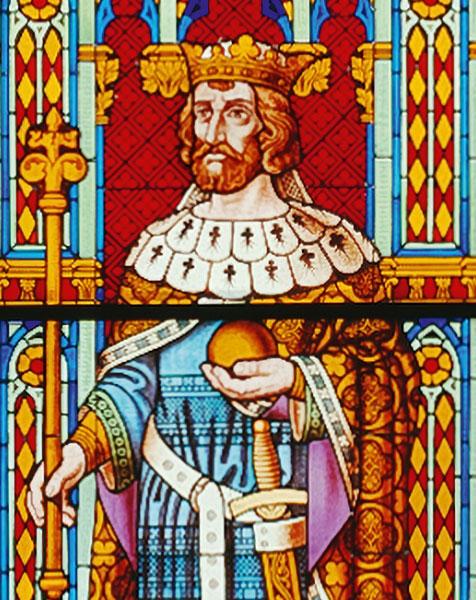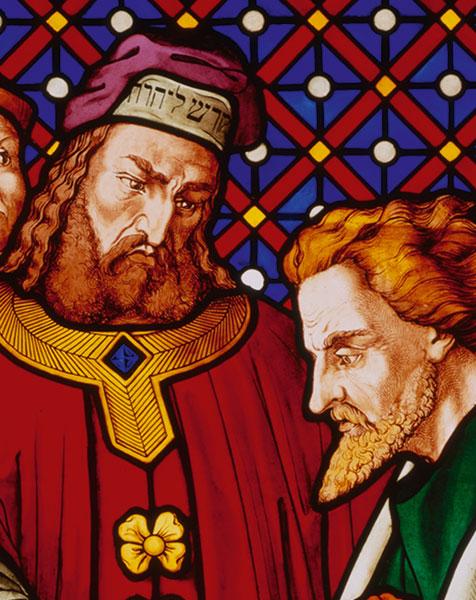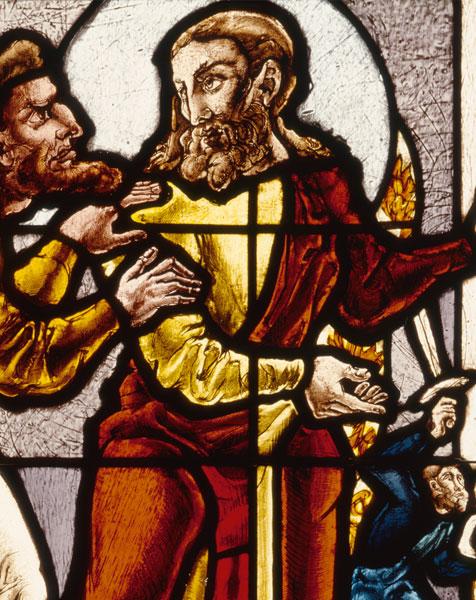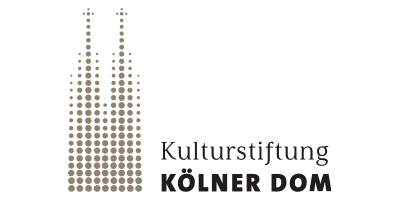
Cologne Cathedral and 'The Jews'-The choir stalls
Virtue and vice as determining features of mortal life are the theme of over 500 figures and reliefs on the choir stalls, the oldest parts of which date from the early fourteenth century.
The carved images on the choir stalls are not only of Biblical parables, but also include scenes from ancient mythology and motifs from the Jewish Talmud.
The symbolic portrayal of the vice of gluttony on one of the large end-panels on the north side of the choir stalls turns out to be a defamatory anti-Jewish caricature: a Jew wearing a pointed cap holds a sow in his arms, while a second Jew kneels in front of the sow and suckles at her teat while a third feeds the animal. Given that pigs are considered unclean in Judaism, there can be no denying the malicious sentiment behind this scene. During the Middle Ages, the Christian world view also held that the pig was the seat of evil and a symbol of the mortal sin of gluttony. Promoted by medieval texts in which parallels were drawn between the unbridled appetite of pigs and the allegedly typical behaviour of Jews and accompanied by the increased marginalisation and ghettoisation of Jewish citizens, the motif of the Judensau became the epitome of the anti-Jewish caricature.
The image in the second relief on the choir stall end-panel is by no means any more well-disposed towards Jews: here, legend and pseudo-historic events are blended to create an anti-Jewish composition. In this image, a Jew is seen emptying a large trough, out of which a large pig and several piglets are seen falling. The first Jew is aided by a second Jew, who holds the hand of a boy with a cruciform halo. The Christian boy whose hand is being held by the second Jew is a reference to one of the best known legends of a ritual murder in the Rhineland region, as indicated by the later addition of the letter 'W' for Werner and 'Mart' for martyr above the image. According to the Gesta Treverorum (Deeds of the Trevians), the boy Werner was murdered by Jews in the house of his Jewish master in Oberwesel in 1287.
The tidings of this alleged ritual murder spread like wildfire, and Jews—particularly those living in the towns and cities of the Middle Rhine region—soon became the target of numerous pogroms.
The two reliefs on the opposite end-panel focus on one of the four cardinal virtues: justice. The Old Testament figure of King Solomon features twice here as a wise judge. The relief on the right tells the popular and widely depicted parable of the true mother who would rather leave her child to another woman than have it cut in half in accordance with Solomon's ruling, thereby revealing herself to be the child's real mother.
The scene on the left is much less widely known. Here again, it features a judgement scene, albeit this time one which originates in the Talmud. In the Christian tradition, however, the Rabbi judge of the Talmud story is replaced by King Solomon. In order to determine who is the only natural child and rightful heir of a deceased man, the wise king commands the dead man's sons to use their bows to shoot arrows at the corpse of their father, which is wrapped in a shroud and tied to a tree. The one with the truest aim will determine the man's rightful heir, he rules. Of course, the dead man's natural son and rightful heir is revealed by the fact that he is the only one to refuse to shoot arrows at his father's mortal remains.
Even if the 'Judgement of Solomon' serves to illustrate a Christian virtue here, it is not intended to be a positive pendant to the Judensau. Because in the Bible moralisée, a type of richly illustrated manuscript dating from the thirteenth century in which Biblical stories are morally interpreted using typological comparisons, Solomon's separation of good from evil is equated with the battle between Ecclesia (i.e. the Church) and Synagoga (the Jewish synagogue). Centuries before, Saint Augustine spoke in his sermons of the good mother as Ecclesia and the bad mother as Synagoga.
Klaus Hardering
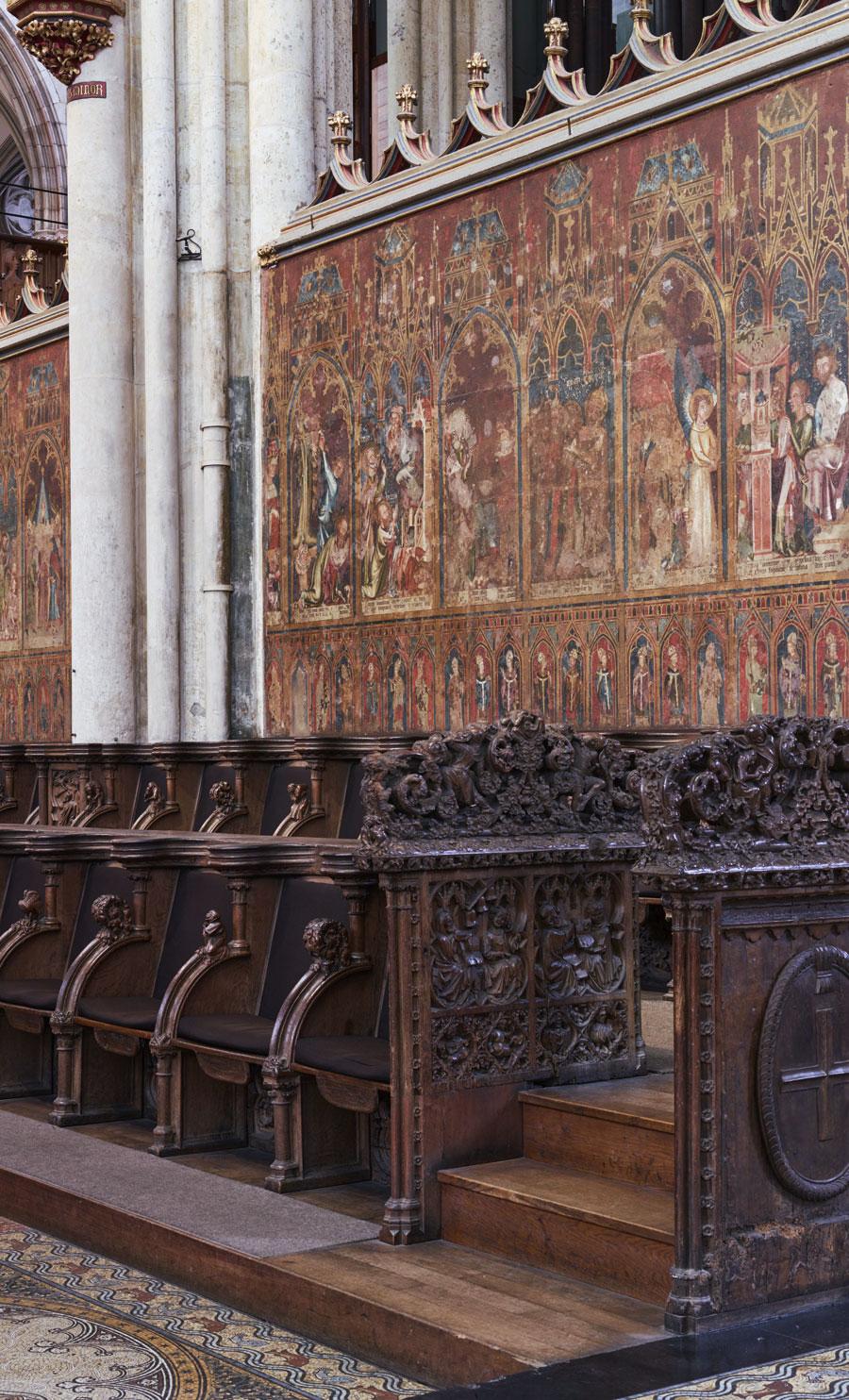
This image shows a sow and three men, who are identifiable as Jews from their pointed hats. Given that pigs are considered unclean in Judaism, the malicious sentiment behind this scene is unmistakable.


